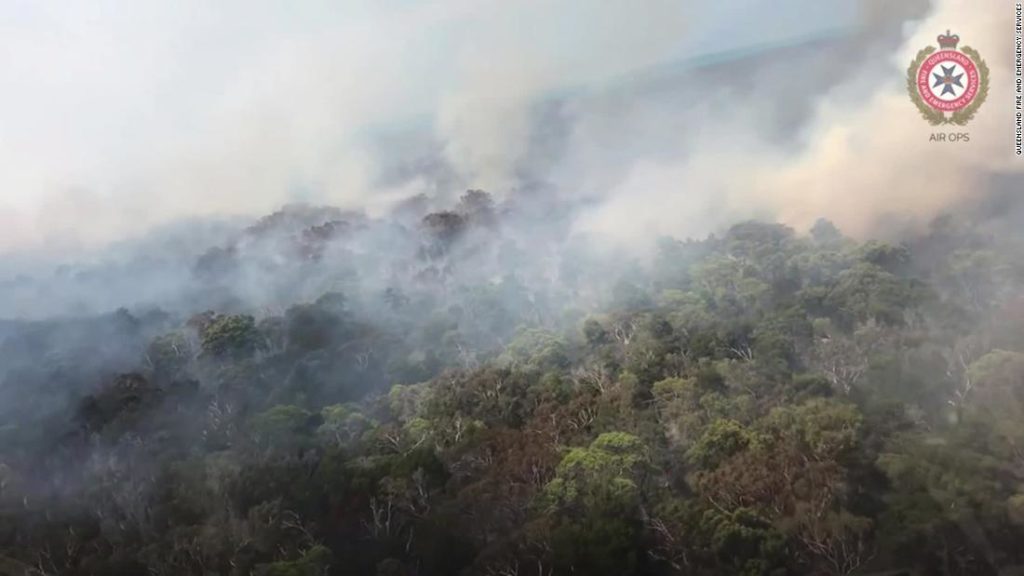Tourists and staff on the UNESCO World Heritage site have been forced to evacuate as the fire closes in on local attractions and the island’s unique forests are smothered in smoke.
On Tuesday morning local time, fire and emergency services in the eastern state of Queensland issued a “prepare to leave” warning for the Kingfisher Bay Resort and Village on the island, as blazes in several locations threatened the area.
Emergency crews used water bombs to slow the blaze, but the fire service warned conditions could get worse.
“Fire crews are working to contain the fire but firefighters may not be able to protect every property. You should not expect a firefighter at your door,” the directive said.
Also known by its Indigenous name K’gari, the island was listed as a UNESCO World Heritage site in 1992 for its unique forests and natural beauty. It’s the world’s largest sand island and has the only tall rainforest that grows on sand.
But the makeup of the sand island was making work difficult for the more than 30 crews fighting the blaze on the island, the Queensland fire service said.
Crews are also battling fires in dozens of other areas of mainland Queensland and New South Wales.
Record heat could set up another devastating bushfire season
Sydney experienced the hottest November night on record on Saturday, with a minimum overnight temperature of 25.3°C (77.54°F), followed by a second straight day of more than 40°C (104°F) weather on Sunday.
Last year was Australia’s hottest on record, with the seven years from 2013 to 2019 all ranking in the nine warmest years.
“The Bureau of Meteorology and others have predicted another extremely dangerous fire season on the east coast and also in southwestern Australia,” said Bill Hare, director of climate science and policy institute Climate Analytics, on Tuesday.
“If that explodes again, it’s going to be very damaging economically and also psychologically. I think people are scarcely recovering from the bushfires last year and early this year. So when you’re looking at these regions now, you can see the damage has not been undone.”
You may also like
-
Afghanistan: Civilian casualties hit record high amid US withdrawal, UN says
-
How Taiwan is trying to defend against a cyber ‘World War III’
-
Pandemic travel news this week: Quarantine escapes and airplane disguises
-
Why would anyone trust Brexit Britain again?
-
Black fungus: A second crisis is killing survivors of India’s worst Covid wave

